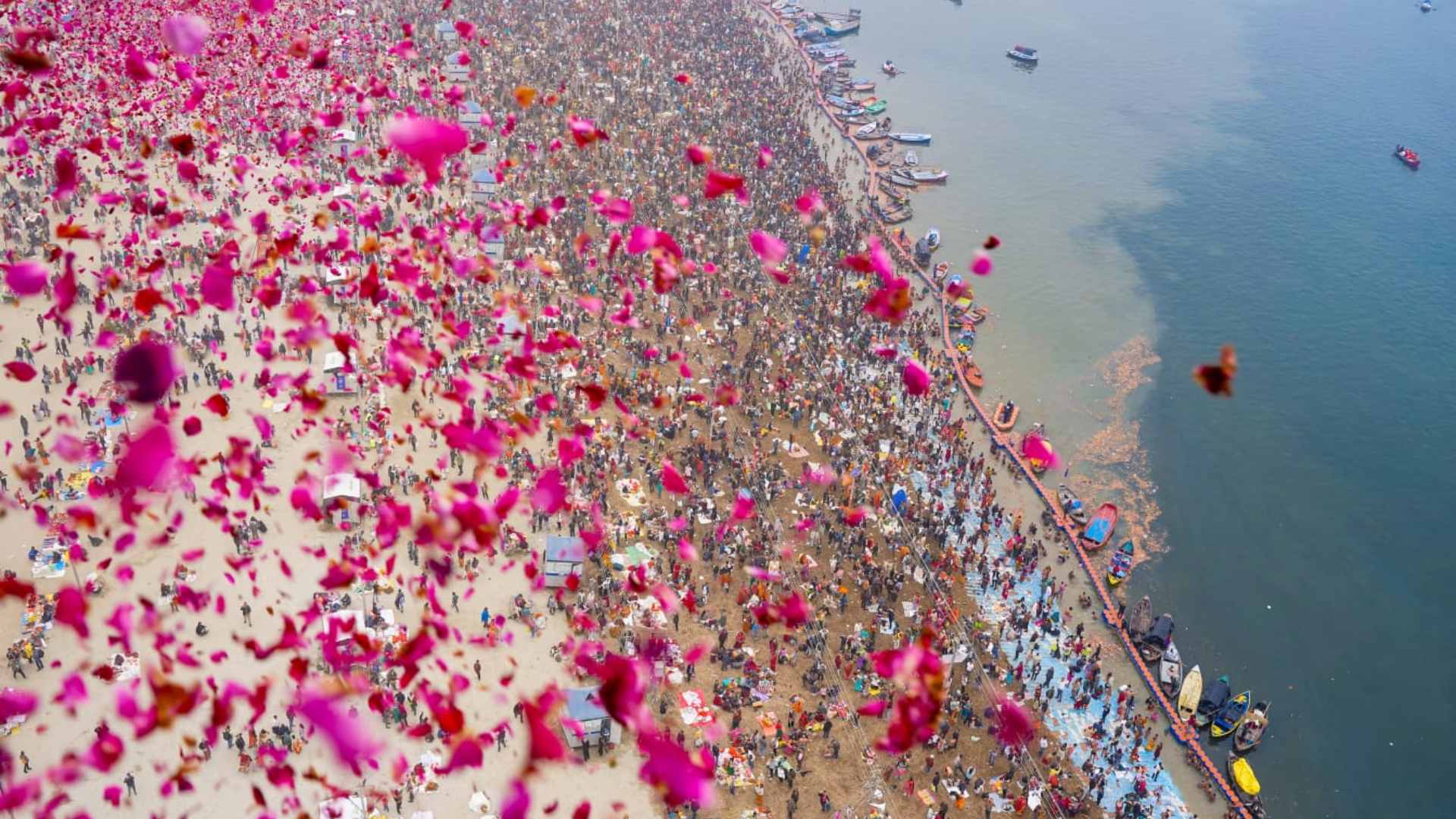On Makar Sankranti, millions of devotees gathered at the Triveni Sangam in Prayagraj for the first ‘Amrit Snan’ of Mahakumbh 2025. The grand two-month-long festival commenced today with the ceremonial sacred dip, led by Naga Sadhus from 13 akharas. This significant ritual, regarded as the Maha Kumbh Mela’s primary attraction, drew pilgrims and spiritual leaders from across the globe.
🚨 ELECTRIFYING ATMOSPHERE: MahaKumbh breaks all RECORD 🚩
1.38 crore Sanatani devotees participated in the ‘Amrit Snan’ today at Sangam by 10:30 AM.
Yesterday, 1.65 crore devotees took the holy dip at Triveni Sangam 🔥 pic.twitter.com/NKxNQfEenX
Advertisement · Scroll to continue— Megh Updates 🚨™ (@MeghUpdates) January 14, 2025
The Naga Sadhus, revered for their deep devotion to Lord Shiva, were the first to perform the holy dip, symbolizing spiritual vitality and religious significance. These ascetics, known for their disciplined penance, uphold a centuries-old tradition of leading the bathing ritual, showcasing their spiritual connection with Shiva.
Significance of the Amrit Snan
The tradition of Amrit Snan dates back to ancient mythology when four drops of Amrit (nectar) fell at Prayagraj, Ujjain, Haridwar, and Nashik during the Samudra Manthan. These places now host the revered Kumbh Mela. Naga Sadhus are given the first privilege for their commitment to protecting and promoting dharma. Their role was formalized under the guidance of Adi Shankaracharya, who organized akharas to safeguard religious values.
Structure of Akharas and Procession Rituals
Thirteen akharas, divided into three groups—Udaseen, Bairagi (Vaishnav), and Sanyasi (Shaivite)—participate in the ritual. Each akhara follows a set order for their ceremonial bath, led by the Acharya Mahamandaleshwar of the akhara’s chariot. Devotees line up along the procession route to receive blessings from the saints.
The akharas include prominent groups like Nirmohi, Digambar Ani, Nirvani Ani, and others, each contributing to the cultural and spiritual essence of the festival. The government meticulously plans the event, ensuring seamless adherence to long-standing traditions and accommodating millions of devotees.
Upcoming Amrit Snans
The Mahakumbh 2025 will feature four more Amrit Snans on key dates:
- Mauni Amavasya on January 29
- Basant Panchami on February 3
- Maghi Purnima on February 12
- Maha Shivratri on February 26
These dates mark the continuation of the spiritual fervor at the Sangam, attracting global pilgrims and uniting faith and humanity.
Also Read: Maha Kumbh: Helicopter Shower Of Rose Petals Elevates The Amrit Snan Ceremony





















